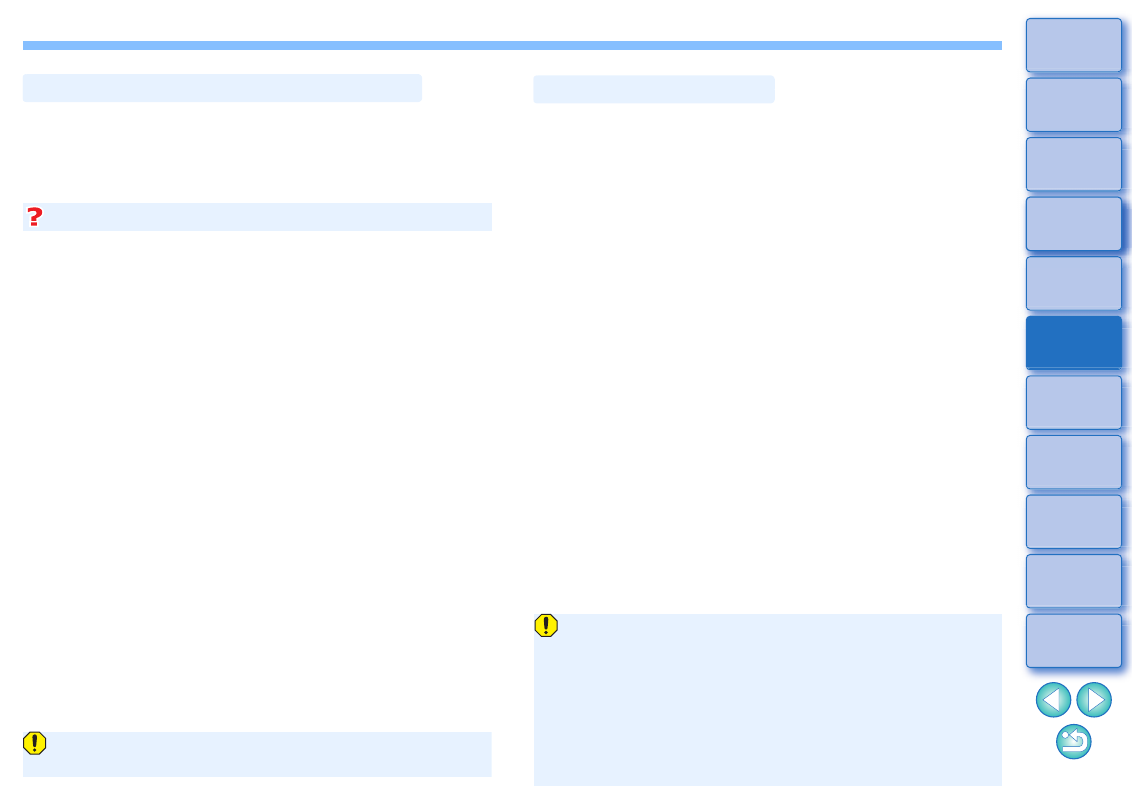Correcting multiple images at a time, Digital lens optimizer – Canon PowerShot G7 X Mark II User Manual
Page 72

72
You can apply the same corrections to several images by first selecting
multiple images in the main window, and then performing correction
procedures
.
Also, you can apply same corrections by copying the recipe of the
corrected image and pasting it onto the multiple images
.
Some noise appeared in the periphery of an image after
correcting [Peripheral illumination]
You can reduce the noise by using luminance and/or chromatic noise
reduction of the noise reduction function
. However, if you had
applied high amount of [Peripheral illumination] correction to the
images that have been shot at night or with a high ISO speed, the
noise might not be reduced.
The image appears with less resolution after correcting
[Distortion]
You can make the image similar to the one before correction by
applying more sharpness with the sharpness adjusting function
The colors of the image became weaker after correcting [Color
blur]
You can make the image similar to the one before correction by
adjusting the color tone
and/or the color saturation
make the color deeper.
The result of [Color blur] correction cannot be detected
[Color blur] correction is effective for correcting blue or red color blur
which occurs at the edge of the highlighted area of an image. If
conditions do not match, correction cannot be made.
Additional information
Correcting Multiple Images at a Time
The periphery of the image may be truncated when [Distortion]
correction is made.
This function enables the resolution of images to be increased by
removing any remaining aberration related to image-forming capability or
any deterioration of resolution resulting from diffraction phenomena.
These optical phenomena cannot be corrected under Lens aberration
correction
. Correction is achieved using the designed value of
each lens. You can correct these optical phenomena in RAW images
which have been shot with compatible lenses. JPEG, TIFF, S-RAW, and
M-RAW images cannot be corrected. To use this function, [Lens data] for
the lens used to shoot images first needs to be downloaded to your
computer. Before using the Digital Lens Optimizer, it is recommended
that you set [Sharpness] or [Strength] for [Unsharp mask] for images to 0.
Note that even though the EOS 20D/EOS 20Da and EOS 350D are
EOS cameras supporting the Digital Photo Professional, they are not
compatible with the Digital Lens Optimizer. Also, note that the Digital
Lens Optimizer is compatible with the EOS 5D with the firmware
version 1.1.1 and the EOS 30D with the firmware version 1.0.6.
Digital Lens Optimizer
To use this function, the EOS Lens Registration Tool (version
1.4.20 or later) must be installed.
The Digital Lens Optimizer is also available for images shot with
an extender attached to a compatible lens.
You cannot use the Digital Lens Optimizer with multiple-exposure
RAW images created on the camera.
EF cinema lenses (CN-E lenses) are not compatible.
[Diffraction correction] cannot be used at the same time as the
Digital Lens Optimizer.